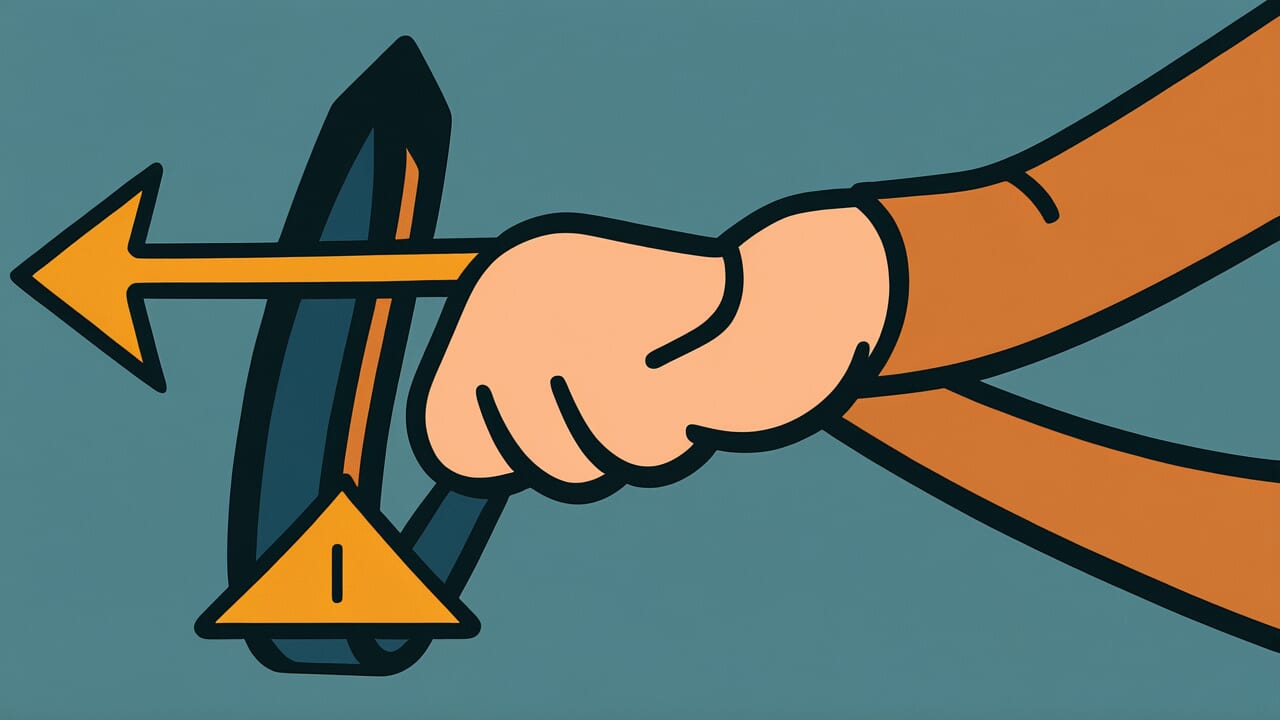How to Read “When the bowstring is drawn, the arrow arrives”
Mato mato harite yumiya itaru
Meaning of “When the bowstring is drawn, the arrow arrives”
This proverb means that when you take the first step to start something, related things naturally gather around you.
Just as setting up a target attracts archers and arrows are shot, beginning something draws in the people, resources, and opportunities you need.
People use this saying to encourage someone hesitating to start something new. It also teaches the importance of beginning even when conditions aren’t perfect.
Rather than waiting for everything to be ready, you should set up the target first. Starting opens the path forward.
This wisdom still applies today when starting a business or new project. If you wait until everything is perfect, you’ll never begin.
But when you start, collaborators appear and necessary information comes to you. Taking action reveals possibilities you couldn’t see before.
This proverb teaches a truth about life: movement creates momentum.
Origin and Etymology
No clear written records explain the origin of this proverb. However, the structure of the words offers interesting insights.
The character “質” originally meant “target.” The idea behind this saying is that setting up a target is the beginning of everything in archery training.
In ancient Japan, archery was a crucial skill for warriors. Practice began with setting up the target.
Once the target was in place, archers naturally gathered. Arrows were shot, and skills were refined.
This sequence perfectly expresses how starting something triggers a chain of related events.
The verb “to draw” or “to set up” carries important meaning. Setting up a target isn’t just preparation.
It’s a clear declaration of intent. It announces that practice will happen here, that people will gather here.
That declaration has the power to attract everything related to it. This insight lies at the heart of the proverb.
Born likely from the world of martial arts, this expression eventually became widely used as a life lesson.
Usage Examples
- When I started a new blog, “When the bowstring is drawn, the arrow arrives” proved true—readers and collaborators naturally gathered
- I decided to open a classroom first. As they say, “When the bowstring is drawn, the arrow arrives,” so students and materials will surely come together
Universal Wisdom
This proverb speaks to a universal truth about the mysterious chain between human action and results.
Why does starting something set things in motion? Because human society is fundamentally a network of interactions.
We often wait for perfect preparation. We want all conditions met and all risks eliminated before we move.
But our ancestors understood something important. The world is waiting for us to act.
Setting up a target isn’t just preparation. It’s a question posed to the world.
When someone starts something, others respond. When intentions and purposes become clear, sympathetic people appear and necessary things become visible.
This human nature hasn’t changed from ancient archery grounds to modern business.
This proverb has been passed down because it answers a fundamental human fear: the fear of beginning.
To those of us paralyzed by perfectionism, it says to set up the target first. Then the path will open.
This wisdom offers timeless encouragement to everyone who stands frozen before a challenge.
When AI Hears This
Looking at drawing a bow through physics reveals a remarkably efficient energy conversion system.
The force of drawing deforms the bow’s material. Elastic energy accumulates in proportion to that deformation.
For example, drawing a bow 30 centimeters stores energy proportional to the square of the distance. That’s four times more energy than drawing it 15 centimeters.
During the “drawing” phase, human muscle power slowly converts to potential energy over time.
The conversion efficiency at the moment of release is noteworthy. Modern compound bows convert about 80 percent of stored energy into the arrow’s kinetic energy.
Energy that a human accumulated over several seconds releases in less than 0.01 seconds. This time compression ratio reaches several hundred times.
In other words, a bow is “a device that compresses time to release energy.”
This reveals a physical fact: the amount of energy and time invested during preparation determines the power of the result.
Drawing the bow only slightly won’t make the arrow fly. If the drawing motion is sloppy and force direction wavers, much energy dissipates wastefully as heat and vibration.
The structure ensures that only perfect preparation produces maximum results.
Lessons for Today
This proverb teaches you the courage to escape the trap of perfectionism.
We live in an age of information overload. When you try to start something, infinite preparation tasks appear and overwhelm you.
But think about it. When setting up a target, it doesn’t need to be perfect.
What matters is the decision and action of setting up the target first.
When you take that first step, invisible collaborators appear. Unexpected information comes your way.
Start posting on social media and you get responses. Open a small shop and customers come, giving you feedback to improve.
Modern society allows you to start small and adjust as you go.
Rather than waiting for a perfect plan, set up the target first. Then adjust your course based on the arrows that gather.
That flexibility is exactly the attitude needed in today’s rapidly changing world.
What’s the “thing you want to start” inside you? Why not set up that target today?
Surely, arrows you never expected will arrive at your doorstep.



Comments